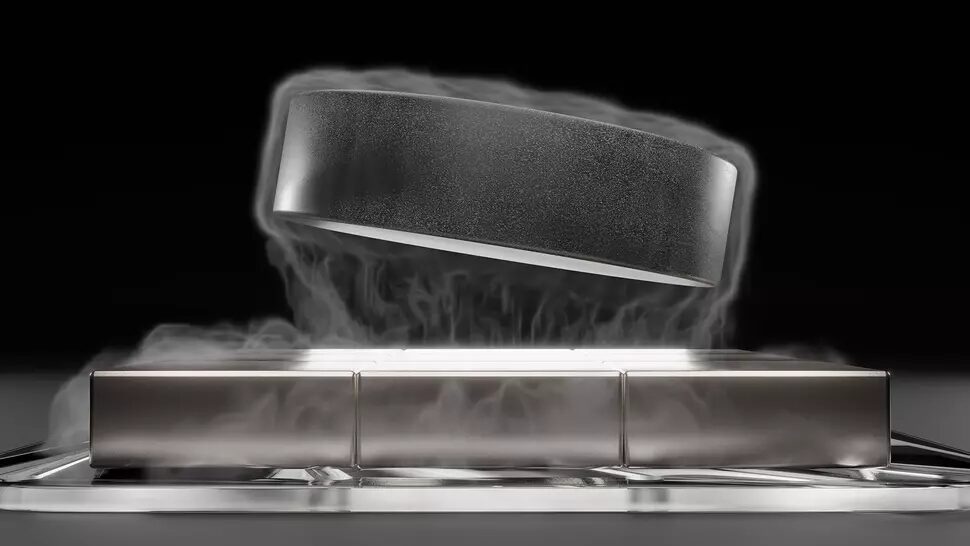Humanity may be in the throes of another breakthrough that's every bit as impactful as the invention of the transistor and the advent (and eventual vindication) of quantum computing. LK-99, as it's been named, is a new compound that researchers believe will enable the fabrication of room-temperature, ambient-pressure superconductors. Initially published by a Korean team last Friday, frantic work is underway throughout the research world to validate the paper's claims. For now, two separate sources have already provided preliminary confirmations that this might actually be the real thing — Chinese researchers have even posted video proof. Strap in; this is a maglev-powered, superconducting ride.
Superconductors, a wild category of compounds that can conduct electricity without any losses, have been a metaphorical goose chase for years now, with multiple research teams claiming (and then retracting) papers and announcements of its achievement. The reason is simple: Few things come close to the potential of an actual superconductor discovery in terms of what it can do for humanity's current and future technology. Imagine if your 16-core mainstream CPU (which likely requires a competent watercooling solution to avoid incinerating itself) operated without power losses — no current leakage, no electricity waste in the form of heat. Superconductors mean almost perfectly efficient computing.
Scale that to the world's supercomputers, and you begin to get an idea of the performance impact when trillions of transistors based on superconducting materials work in tandem across GPU and CPU tiles to accelerate things like Artificial Intelligence (AI) workloads. Or scale it in the realm of consumer electronics, quantum computing (where superconductors are important for Josephson junctions), and magnets in general (maglev trains, tokamak fusion reactors, Magnetic Resonance Imaging (MRI), electric motors and generators...)
If you can dream it and it features an electrical current or magnetism, it's likely a superconducting material would improve most aspects of it while leaving a surplus of previously-wasted energy within humanity's batteries. Environmental sustainability, then, is also a factor.
There might be more to LK-99 than skeptics expected, as two research teams have already confirmed the superconductivity claims — albeit in preliminary testing. Researcher Sinéad Griffin from the U.S.'s Lawrence Berkeley National Lab pored over the original paper, taking advantage of the supercomputing capabilities within the Department of Energy to simulate the LK-99 material. This complex-yet-simple concoction results from combining the minerals lanarkite (Pb₂SO₅) and copper phosphide (Cu₃P), which are then baked within a 4-day, multi-step, small batch, solid-state synthesis process.
As a result of the simulations, the researcher published an analysis letter in pre-print form to Arxiv, where she confirmed that the resulting material should manifest the superconduction pathways for electrons to travel through unimpeded and without any resistance. Interestingly, she noticed that these superconducting pathways only form in very specific areas of the compound, namely the highest-energy areas of the resulting crystal lattice.
Because physics dictates that systems tend to remain stable at their lowest-possible energy states, this means that the amount of superconducting material produced with each "shake-and-bake" manufacturing attempt will result in relatively low quantities of the material. The hope, then, is that further refinements to the fabrication process will yield higher quantities of the material that can then be harvested and put toward building the superconductors themselves.
But in what's perhaps the most definite sign of a verification, Chinese researchers with the Huazhong University of Science and Technology have claimed to have successfully replicated the superconductor's manufacturing process, posting a video on Twitter as proof (expand the tweet above to see the video).
The above video showcases the Meissner effect as being definite proof of the material's superconducting capabilities. The Meissner effect refers to the expulsion of a magnetic field due to the superconducting process. It is the reason why the video showcases levitating materials — they are interacting with LK-99's Meissner-induced magnetic field.
The entire story surrounding this discovery is a scientific rollercoaster ride, with rogue scientists, updated papers, plus cloudy definitions and process descriptions within the paper that make replication efforts more difficult, and even a Russian soil scientist (and anime catgirl) deconstructing the original Korean paper to unveil the trademark levitation of the Meissner effect over her own kitchen counter.
We've seen movies with much less complex plots than this already. It's eerily appropriate that such a monumental discovery would be rife with drama. And we're still waiting for a definite announcement that yes, humanity has finally produced room-temperature, ambient-pressure superconductors. After that, there are plenty more physics barriers to crash through, as always.
Francisco Pires is a freelance news writer for Tom's Hardware with a soft side for quantum computing.




Although, correlation does not equal causation. We should never forget that.